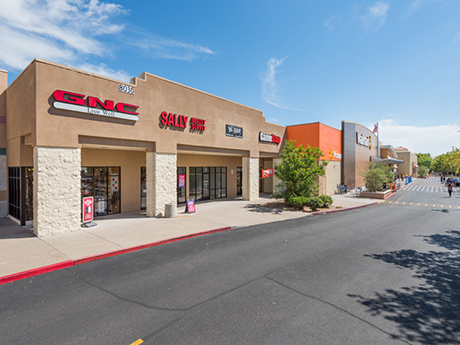— By Anthony Johnson, President, Pegasus Group and Western Regional Director, X Team Retail Advisors; and AJ Johnson, Associate Broker, Pegasus Group —
Looking back on the Albuquerque retail market for 2022 and 2023, I have to say that 2022 was the height of our boom in terms of the sale/lease of shopping center and freestanding pad sales, built-to-suit opportunities and redevelopment opportunities. The top consumers of these product types were chicken (QSR), coffee, car washes and cannabis, or as we affectionately called them, the “Four C’s.” Due to the sheer amount of activity in the pad user market, underutilized was a key word during this time. We saw vacant pad sites that were once considered unleasable or unsellable, perking the interest of investors, tenants and developers. By 2022 the negative effects of the pandemic had subsided, which resulted in the most robust year we’ve ever seen in terms of pad sales/leases. I’ve never seen anything like it. It was like a crescendo… and then, the “music” stopped.
It was February of 2023 when the music started to get fainter. By August 2023, the music stopped, and now we’re seeing the aftermath of this. Meaning, many of the pad sites that were purchased, or pursued, by would-be car wash operators or QSRs did not get built and are now coming back to the market. We also are witnessing the over saturation of cannabis, which will likely result in the closure of stores and the consolidation of brands over time and will cause a ripple effect on shop space leasing.
Regarding car wash development, and it must be noted that many of those same car wash operators who purchased land, are back in this market, are trading at 60 to 70 percent of what they paid for as it has become more expensive to build and less profitable to sell. Over time as more of these failed development projects come to the market in 2024 and 2025, we likely will see opportunistic developers focus their interest on these locations. As of now, everything is still overpriced, and expectations are out of line and out of reach from a pricing perspective. Many of the groups who bought in too late are trying to wait it out, but inevitably they will have to cut their losses and new projects can start to be born from the ashes.
Beyond pad site development, traditional shopping center leasing has remained surprisingly robust. Numerous shopping centers, historically grappling with a 20 percent vacancy rate, now boast full occupancy or close to it. Additionally, we’ve observed some of the largest pad site developers redirecting their focus towards acquiring distressed strip centers in prominent retail trade areas. They are successfully undertaking re-tenanting and remodeling projects instead of the redevelopment trends seen in 2022, particularly for the benefit of QSR’s, car washes, etc. Despite the Federal Reserve’s efforts to curb inflation through rate hikes, the American consumer market has proven remarkably resilient. Consequently, service-based retail, restaurants and soft goods retailers are stronger than ever, and are actively seeking opportunities to expand their footprints.
Looking Ahead to 2024 and Beyond — Survive Until ’25
Unfortunately, the cumulation of greater economic factors affecting the U.S. economy, most notably interest rates reaching their highest point in over 15 years, has made new retail development nearly impossible for most. High construction costs further exacerbate the issue, placing a crippling burden on the few developers positioned to move forward with their projects. Consequently, rental rates in New Mexico have risen to unprecedented levels. In 2023, while there was progress, it paled in comparison to the reckless abandon we described in 2022, with challenges expected to persist into 2024. Undoubtedly, a much-needed correction, and perhaps a recession, is underway. However, amidst these challenges, there remains optimism for a gradual reversal of this trend towards healthy, sustainable growth in the coming years. Achieving equilibrium in major economic factors, such as interest rates, construction costs and wages, is essential, and we’re optimistic about this coming to fruition soon. Once this balance is restored, retailers and developers can find the economic sensibility needed to reignite smoldering deals. Until then, it is a pivotal moment for all retail real estate professionals to refine their skills and embrace creative strategies to navigate the current economy, and most importantly “survive ‘till 25!”


